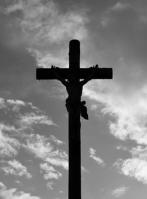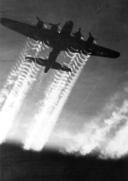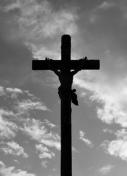Lt.
John
Kreigshauser
was
at
the
controls
of
his
crippled
American
B-17
on
February
22,
1944
and
striving
with
all
the
skills
at
his
command
to
get
it
safely
back
to
England.
Dubbed
the
“Mi
Amigo,”
meaning
“my
friend”
in
Spanish,
the
WWII
bomber
was
carrying
ten
American
airmen,
and
had
been
badly
shot
up
on
its
mission
to
bomb
a
German
airfield
in
Nazi-occupied
Denmark.
It
had
already
jettisoned
its
4,000-pound
payload
of
bombs
in
the
North
Sea,
but
the
plane’s
failing
engines
told
the
pilots
they
were
not
going
to
be
able
to
make
it
to
their
landing
strip.
Then,
as
hope
began
to
fade,
the
pilots
spotted
a
park
in
Sheffield,
England,
where
they
might
be
able
to
make
a
crash
landing.
However,
just
as
they
approached,
they
saw
a
group
of
young
boys
playing
exactly
where
they
needed
to
land.
One
of
those
boys
was
eight-year-old
Tony
Foulds.
As
Tony
tells
the
story,
he
saw
the
pilots
waving
their
hands,
apparently
trying
to
signal
to
the
boys
to
get
out
of
the
way,
but
it
was
too
late.
Rather,
than
risk
killing
the
boys,
the
pilots
flew
on
and
crashed
into
a
nearby
hill.
All
those on board died.
Seventy-five
years
later,
a
memorial
stone
with
a
plaque,
surrounded
by
ten
oak
trees,
marks
the
crash
site,
and,
since
1969,
a
service
has
been
conducted
there
on
the
anniversary
of
the
crash.
On
the
seventy-fifth
anniversary,
American
planes
will
conduct
a
memorial
flyover
of
the
site.
Tony
Foulds,
now
in
his
eighties,
all
these
years
later
still
experiences
pangs
of
grief
and
guilt,
as
he
contemplates
even
his
indirect
responsibility
for
the
deaths
of
these
ten
men. He is convinced that they died to save his life or, as he
“
For
while
we
were
still
helpless,
at
the
right
time
Christ
died
for
the
ungodly.
For
one
will
hardly
die
for
a
righteous
man;
though
perhaps
for
the
good
man
someone
would
dare
even
to
die.
But
God
demonstrates
His
own
love
toward
us,
in
that
while
we
were
yet
sinners,
Christ
died
for
us
” (Romans 5:6-8).



himself,
puts
it,
“It’s
me
that
killed
them.”
He
visits
the
site
almost
daily
to
weep
over,
speak
to,
and
remember
the
dead
airmen
who,
though
strangers,
gave
their
lives
for
him.
This
moving
story
is
reminiscent
of
the
sacrifice
Christ
made
on
the
cross.
Yet,
Christ’s
sacrifice
is
greater
for
several
reasons.
First
,
it
was
Christ,
the
very
Son
of
God,
who
died,
and
not
a
human
who
died
for
humans.
Second
,
Christ
died,
not
for
innocent
children,
and
not
just
for
those
who
never
knew
Him,
but
for
those
who
were
actually
hostile
to
Him
in
their
sins.
Indeed,
most
of
those
for
whom
He
died
never
appreciate,
recall,
or
respond
to
the
sacrifice
He
made
for
them.
Third
,
the
sacrifice
of
Christ
holds
such
potential
value
that
it
is
sufficient
to
save,
not
just
a
few
boys,
but
the
whole
world
(1
John
2:2).
Fourth
,
Christ
died,
not
just
to
extend
people’s
earthly
lives,
but
to
give
them
an eternity with God in heaven (1 Peter 3:18).
The
only
tree
remembered
in
connection
with
Jesus’
death
is
the
one
on
which
He
died,
the
only
stone
the
one
which
the
angel
rolled
away
from
His
tomb
to
signify
His
resurrection,
and
the
only
memorial
the
one
which
His
disciples
observe
every
Sunday
in
the
Lord’s
Supper.
Yet,
because
they
know
that
He
died
that
they
might
live,
they
also
memorialize
His
sacrificial
death
for
them
every
day
of
their
lives
in
the
way
they
live
them.
They
do
this
because
they
know
that
they
owe
Him
everything,
since
it
was
their
sins
that
put
Him
on
the
cross.
Because
He
died
for
them,
they
live for Him, and each one claims Him daily as “my Friend.”
MI
AMIGO
Mi AMIGO








“For
while
we
were
still
helpless,
at
the
right
time
Christ
died
for
the
ungodly.
For
one
will
hardly
die
for
a
righteous
man;
though
perhaps
for
the
good
man
someone
would
dare
even
to
die.
But
God
demonstrates
His
own
love
toward
us, in that while we were yet sinners, Christ died for us
” (Romans 5:6-8).
Lt.
John
Kreigshauser
was
at
the
controls
of
his
crippled
American
B-
17
on
February
22,
1944
and
striving
with
all
the
skill
at
his
command
to
get
it
safely
back
to
England.
Dubbed
the
“Mi
Amigo,”
meaning
“my
friend”
in
Spanish,
the
WWII
bomber
was
carrying
ten
American
airmen,
and
had
been
badly
shot
up
on
its
mission
to
bomb
a
German
airfield
in
Nazi-
occupied
Denmark.
It
had
already
jettisoned
its
4,000-pound
payload
of
bombs
in
the
North
Sea,
but
the
plane’s
failing
engines
told
the
pilots
they
were
not
going
to
be
able
to
make
it
to
their
landing
strip.
Then,
as
hope
began
to
fade,
the
pilots
spotted
a
park
in
Sheffield,
England,
where
they
might
be
able
to
make
a
crash
landing.
However,
just
as
they
approached,
they
saw
a
group
of
young
boys
playing
exactly
where
they
needed
to
land.
One
of
those
boys
was
eight-year-old
Tony
Foulds.
As
Tony
tells
the
story,
he
saw
the
pilots
waving
their
hands,
a
p
p
a
r
e
n
t
l
y
trying
to
signal
to
the
boys
to
get
out
of
the
way,
but
it
was
too
late.
Rather,
than
risk
killing
the
boys,
the
pilots
flew
on
and
crashed
into
a
nearby
hill.
All
those
on
board
died.
Seventy-five
years
later,
a
memorial
stone
with
a
plaque,
surrounded
by
ten
oak
trees,
marks
the
crash
site
and,
since
1969,
a
service
has
been
conducted
there
on
the
anniversary
of
the
crash.
On
the
seventy-fifth
anniversary,
American
planes
will
conduct
a
memorial
flyover
of
the
site.
Tony
Foulds,
now
in
his
eighties,
all
these
years
later
still
experiences
pangs
of
grief
and
guilt,
as
he
contemplates
even
his
indirect
responsibility
for
the
deaths
of
these
ten men. He is convinced that they

died
to
save
his
life,
or,
as
he
himself,
puts
it,
“It’s
me
that
killed
them.”
He
visits
the
site
almost
daily
to
weep
over,
speak
to,
and
remember
the
dead
airmen
who,
though
strangers,
gave their lives for him.
This
moving
story
is
reminiscent
of
the
sacrifice
Christ
made
on
the
cross.
Yet,
Christ’s
sacrifice
is
greater
for
several
reasons.
First
,
it
was
Christ,
the
very
Son
of
God,
who
died,
and
not
a
human
who
died
for
humans.
Second
,
Christ
died,
not
for
innocent
children,
and
not
just
for
those
who
never
knew
Him,
but
for
those
who
were
actually
hostile
to
Him
in
their
sins.
Indeed,
most
of
those
for
whom
He
died
never
appreciate,
recall,
or
respond
to
the
sacrifice
He
made
for
them.
Third
,
the
sacrifice
of
Christ
holds
such
potential
value
that
it
is
sufficient
to
save,
not
just
a
few
boys,
but
the
whole
world
(1
John
2:2).
Fourth
,
Christ
died,
not
just
to
extend
people’s
earthly
lives,
but
to
give
them
an
eternity
with
God
in
heaven
(1
Peter
3:18).
The
only
tree
remembered
in
connection
with
Jesus’
death
is
the
one
on
which
He
died,
the
only
stone
the
one
which
the
angel
rolled
away
from
His
tomb
to
signify
His
r
e
s
u
r
r
e
c
t
i
o
n
,
and
the
only
memorial
the
one
which
His
disciples
observe
every
Sunday
in
the
Lord’s
Supper.
Yet,
because
they
know
that
He
died
that
they
might
live,
they
also
memorialize
His
sacrificial
death
for
them
every
day
of
their
lives
in
the
way
they
live
them.
They
do
this
because
they
know
that
they
owe
Him
everything,
since
it
was
their
sins
that
put
Him
on
the
cross.
Because
He
died
for
them,
they
live
for
Him,
and
each
one
claims
Him
daily as “my Friend.”










